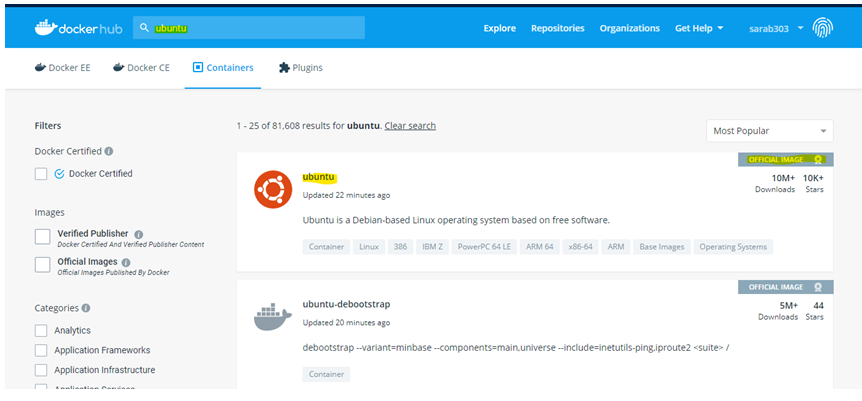
The -q option in the above command displays the image IDs of all untagged images. The filter dangling=true is used to identify untagged images: $ docker rmi $(docker images -f "dangling=true" -q) You can provide filters based on specific criteria using the -f option (not to be confused with the -f flag available for image rm to force an action). To eliminate all untagged images in Docker, use the docker rmi command with a filter. Untagged images still occupy valuable disk space, which slows your system down more and more over time. We’ll use rmi for the following image-removal examples. Using it to remove an image by name looks like this: $ docker rmi demoĭeleted: sha256:2cbc27836df4a7707e746e28368f1fdecfefbfb813aae06611ca6913116b80b4 The Docker CLI has a shorthand approach to removing images in the alias rmi. While it’s not usually recommended, you can force the removal of an active image using the -f flag: $ docker image rm -f Using the rmi Shorthand For Removing Images You should stop or remove the running containers that are using the images. Note: You can’t easily remove images still in use. You can target an image for removal by referencing its name: $ docker image rm 🙌 Click to Tweet Remove a Specific Image by Name
#GIVE DOCKER MORE DISK SPACE HOW TO#
Don't let Docker clutter take over your system! Learn how to efficiently clear images, volumes, and containers with these handy commands.

My_image latest 2cbc27836df4 70 seconds ago 7.05MBĪfter the pruning process, the image with no name or tag has disappeared. We’ll list our images again to see the results of our work: $ docker image ls WARNING! This will remove all dangling images.Īre you sure you want to continue? yĭeleted: sha256:85b412789704c17e9c5e7edc97b2f64c748bbdae7eaa44d3fe2cc21a87acad3d To safely delete all images that are truly dangling, you can use the docker image prune command: $ docker image prune For example, it could have been used to start a container by referencing its ID. However, it is possible for an image with no name or tag to be active. In the listing example above, we have a dangling image. The listing also displays the first 12 characters of each image’s 64-character ID, creation dates, and the storage space the images are consuming. The previous version of the image is still on the file system, but is not now in use.


This dangling image resulted from a rebuilding of my_image (a common scenario). In this case, it’s a “dangling” image: one that is not currently used by a container. Listing images above has revealed images named my_image and demo, both tagged latest. My_image latest 2cbc27836df4 60 seconds ago 7.05MBĭemo latest 26d80cd96d69 15 months ago 28.5MB
#GIVE DOCKER MORE DISK SPACE FREE#
Optimize your admin tasks and budget with $275+ enterprise-level features included free in all WordPress plans.


 0 kommentar(er)
0 kommentar(er)
